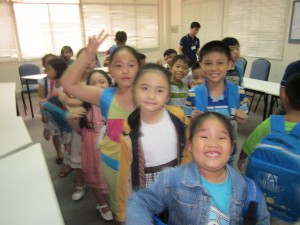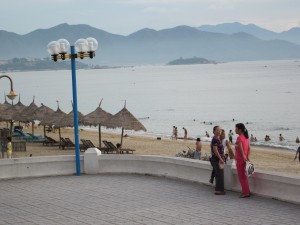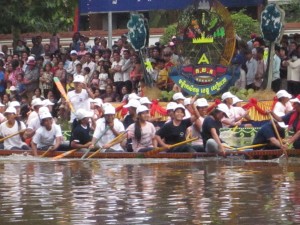Modified from the original post on March 23, 2011 on Girl Meets World, which chronicled my travels in Vietnam and South East Asia.
I have never been so afraid of middle-aged men in my life.
Squinting through the net, secured in place between a pole and a tree, I awaited the next serve.
Well, not quite of them, but for my ego, I thought as I looked at my opponents.
It was 6:34 a.m. I had been awake for 9 minutes. I still had my glasses on.
And, I was getting my hiney handed to me on a make-shift badminton court by a group of grandpas.
Early morning is the time for exercise in Vietnam in order to beat the heat. The sport of choice? Badminton. Oh, in most parks, you can see quite a variety of activities: kung fu, jogging, ballroom dance, group aerobics, but the real competitive fire comes out for this fast-paced frenzy of soul-crushing defeat.
That’s if only you’re me, don’t stretch, and wait for the time you’re supposed to head out the door to get out of bed.
At the urging of my French roommate, I agreed to join her for this early-morning ritual the night before–at my suggestion. Badminton is everywhere in the city, and I wanted to try it. She warned me though, despite enjoying the game and the community atmosphere, we would face tough competition.
On the court, our opponents called out, “Bay, Hai!” 7 to 2. It had hardly been three minutes. Our tough competition was beginning to look bored.
We had been invited to into a game by this group of older Vietnamese. Inclusive, community spirit is big in this neighborhood, and its a novelty to play with a westerner. But I was thinking they were beginning to doubt including us as a strategic addition as they rearranged to “even” the teams.
I loved playing with these men. A group of sweaty, t-shirt clad, middle-aged Vietnamese sweet enough to let us into their badminton game.
They appreciatively laughed as I dropped expletives when I’d miss a return.
They even showed me a little bit how to play, although I think it was because their patience was wearing thin on my faltering early-morning coordination.
The first crew switched out, and a grey-haired woman sauntered onto the court. “Oh, watch out, she’s good,” warned my roomie.
Her playful girlish giggles followed my attempts to return the birdy. Though a bad back kept her from bending to reach the shuttlecock, an expectant, impish grin encouraged me to scoop it into her palm, in order to slam it back over the net into my face.
A new, more youthful character also arrived on the scene, probably hoping to salvage the situation. My new Vietnamese friend, a computer teacher in his 30′s, offered me a turn to serve. Still facing the white-haired wonder-woman, I knew it’d be a quick game.
With a smirk, our elderly opponent leaned over the net to ask our ages. “Hai muoi hai, hai muoi ba,” 22, 23. She then thumbed at her chest, inviting us to guess hers. “Bon muoi lam,” 45, I guessed politely.
Over 60. Incredible.
But that didn’t defeat my new teammate’s spirit.
“You come tomorrow, and we can play again?” he asked.
“We’ll see,” I ambiguously reply, thinking of my head on my pillow.
By 7:30, the sun was starting to unleash its heat, traffic was coursing through the streets, and people were returning home to wash up before work. The police also came round by 7:45, to make sure all nets were down, so that others could use the park normally during the day, signaling the end of the morning’s exercise.
I trotted back to our alley like a wounded solider, ready to fall back into bed. Chatting with my roommate, we exchanged ideas about how to improve our game, like getting up early enough to stretch and practice to warm up before facing competition.
Come tomorrow, play again?
I’ll sleep on it.





